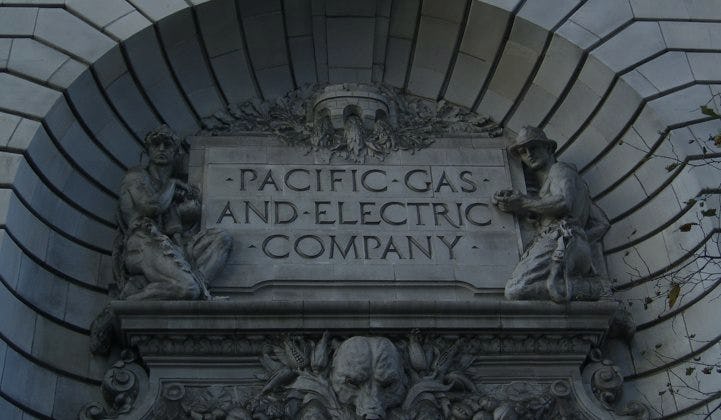

The History
In the last nine years, California has seen a growing number of unnatural disasters that have taken the lives of more than 90 people and caused more than $40 billion in damages. They all have one element in common: They were caused by California’s largest investor-owned utility, Pacific Gas & Electric (PG&E).
A History of Recent Disasters
On Sep. 9, 2010, a gas pipeline running under a residential area of San Bruno exploded, killing eight people, injuring dozens more, and destroying 38 homes. PG&E was eventually found guilty of five counts of criminal negligence and one count of obstruction of justice. An independent state audit found that PG&E had diverted $100 million from pipeline safety into executive bonuses and shareholder profits.
On Oct. 8 and 9, 2017, 170 fires broke out in Northern California. Though there was widespread publicity that PG&E was found not to be at fault for the deadliest Tubbs fire, there was much less notice taken that PG&E power lines were found to be at fault for 12 of those fires, and that Cal Fire referred 8 of those for possible criminal investigation. In Napa and Sonoma counties, PG&E was responsible for more than 127,000 burned acres, 2,147 destroyed structures, and nine deaths.
Most recently, on Nov. 8, 2018, the Camp Fire, the most deadly and destructive fire in California’s history, swept through the town of Paradise, razing the entire town and leaving 85 people dead. On May 15, 2019, Cal Fire announced that PG&E lines were the cause of that fire and referred the case for criminal investigation.
Meanwhile, PG&E paid $30 million in executive bonuses in 2017. The judge overseeing PG&E’s probation for the six felony counts said that PG&E has funneled millions of dollars that should have been used for maintenance into executive bonuses and paid out $4.5 billion in shareholder profits in the five years leading up to the Camp Fire. These are just some examples of a pervasive pattern.
Lessons Learned
What lessons can we learn from this pattern of culpability for increasingly deadly disasters from the state’s largest utility?
As District Judge William Alsup, who presides over PG&E’s criminal indictment for the 2010 San Bruno gas explosion, recently stated: “There is one clear pattern here: PG&E is starting these fires.” And in each case, there is a clear connection between horrific disaster and PG&E’s priorities. Simply put: in an investor owned utility, investor profit comes before public safety. The 16 million people who depend on this essential service deserve better, and a better model exists.